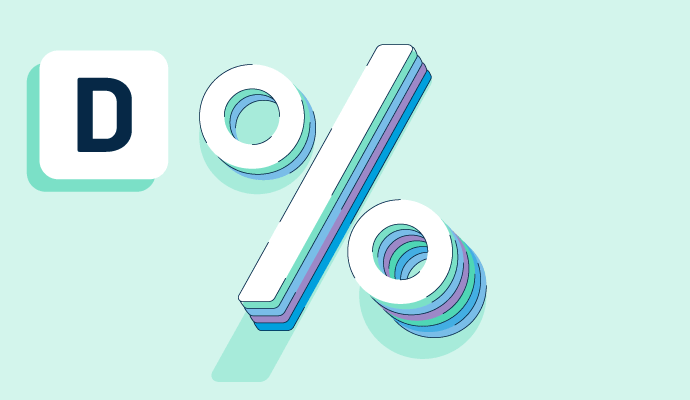What is discounting?
Discounting is the process of estimating the current value of a payment to be received in the future. It helps in valuing cash flow in the future.
The discounting principle works on the concept that receiving money today is worth more than receiving it tomorrow. Simply put, it is the conversion of a future value to an equivalent value that is received immediately.
An asset holds value only if it generates a positive cash flow for a business. This knowledge is necessary in order to provide a return on investment to stakeholders. Discounting can be employed on different types of cash flows such as stock dividends, fixed-term deposits, or a bond’s interests.
Companies often use the concept of discounting to decide on product pricing. Pricing software manages and analyzes pricing strategies for products, which include discounting as an element. It can also track sales profitability and set customer-specific discounting schemes.
What is a discount rate?
Discount rates are the rates of return used to discount future payments to determine their present value. A common example is in the retail industry when item prices are lowered during sales and special events. Retail pricing software helps retailers create and apply discounts and enables dynamic pricing mechanisms.
To calculate discount value:
FV → future value
r → discount rate
t → time period for payment hold
Discounted/Present Value = FV
(1+r) t
Both discounting and discount rates are subject to change based on several factors, primarily the time period and risk of uncertainty. High discount rates have a higher risk, while low discount rates are not as prone to uncertainty.
Discount rates allow investors and businesses to gauge the associated risk with an investment, helping determine the probability of the desired profits.
The business cycle also impacts the ability to offer discounts to customers. Newly founded companies and start-ups are more likely to have higher discount rates, while mature companies have lower discount rates overall.
Factors that influence the discount rate:
- Fiscal policies, like loans and investments interests
- Gross domestic product value
- Inflation
- Exchange rates
- Central bank monetary policy
Types of discount rates
Business and corporate finance often utilize five discount rates to estimate future payments. The types of discount rates are as follows:
Weighted average cost of capital
The weighted average cost of capital (WACC) is a common way to calculate the required return rate, as it represents a business’ average cost of capital from all sources of income. These include stocks, bonds, and forms of debt. It gives stakeholders an overview of the return needed to provide the firm with the necessary capital.
Cost of equity
The cost of equity is used to compute the equity value of an organization. This refers to the market capitalization or market value of equity defined as the total company value attributed to equity investors.
Cost of debt
The cost of debt metric helps calculate the valuation of bond and fixed-income securities. It reflects the default risks of companies as well as interest rates in the market.
Minimum acceptable rate of return
The minimum acceptable rate of return (MARR), also known as the hurdle rate, evaluates internal business projects to account for the time value of money. MARR plays an integral part in deciding which projects are of economic importance and which are not.
Risk-free rate
The risk-free rate is used to determine the cost of equity for a firm. It can be calculated by subtracting the inflation rate from the yield of the Treasury bond that matches the duration of the investment.
Discounting best practices
Discounting, like any other business finance element, is leveraged to make operations and pricing strategies more efficient. Companies should consider the following best practices when discounting.
- Plan a strategy with measurable outcomes: Building a discounting strategy requires a company to place its stakeholders at the center of the planning process. Identify the target audience, whether it’s buyers or investors, and once the strategy is outlined, define the key metrics to measure and track by investing in the right tools and technology.
- Understand margins and account for variables: Knowing how discounting is calculated helps businesses estimate the value of the discounted payment. Companies must account for the cost of goods sold, shipping costs, and surcharges. Staying informed on external factors that affect discounts can prevent them from becoming costly to the business.
- Leverage discounts to strengthen branding: Discounts and rewards are mainly used to promote customer loyalty and retention. While it is good to reward customers that have long-term relationships with a business, companies should keep the discounting process simple and aligned with overall pricing goals.

Aayushi Sanghavi
Aayushi Sanghavi is a Campaign Coordinator at G2 for the Content and SEO teams at G2 and is exploring her interests in project management and process optimization. Previously, she has written for the Customer Service and Tech Verticals space. In her free time, she volunteers at animal shelters, dances, or attempts to learn a new language.




















